An Overview of the Ship Ventilation Systems and Measures to Avoid the Spread of Diseases
Abstract
:1. Introduction
2. Main Types of Ventilation and Air Conditioning Systems
2.1. Independent Natural Ventilation
2.2. Independent Mechanical Ventilation
2.3. Common Mechanical Ventilation for Several Rooms, Combined with Air Conditioning System
3. Review of Main Rules and Requirements for Ventilation of Different Compartments
3.1. General Requirements
- Machinery spaces and technical spaces—ventilation system
- Accommodation and service spaces (galleys, pantries, lockers, etc.)—ventilation and air condition diagrams
- Cargo spaces—ventilation system including hazardous areas if applicable
- Details of fire dampers and weather-tight dampers and approvals
- Details for duct penetrations and approvals
3.2. Main Ventilation Requirements for Different Compartments
3.3. Additional Requirements for Dedicated Vessels
4. Main IMO and Classification Societies Requirements and Guidelines for the Management of COVID-19 and Infectious Diseases
- American Society of Heating, Refrigerating and Air-Conditioning Engineers (ASHRAE),
- Federation of European Heating, Ventilation and Air Conditioning Associations (REHVA),
- European Centre for Disease Prevention and Control (ECDC),
- Canadian Committee on Indoor Air Quality (CCIAQ),
- Architectural Society of China (ASC),
- Society of Heating, Air-Conditioning and Sanitary Engineers in Japan (SHASE),
- Indian Society of Heating, Refrigerating and Air Conditioning Engineers (ISHRAE)
- Public Health Ontario (PHO),
- Chinese Association of Refrigeration (CAR),
- National Health Commission of China (NHC).
5. Ventilation and Air Conditioning Systems for Living Spaces
5.1. Environmental Conditions According to ISO Standard
- Summer—temperatures and relative humidity:
| Outdoor air | +35 °C and 70%RH |
| Indoor air | +27 °C and 50%RH |
- Winter—temperatures
| Outdoor air | −20 °C |
| Indoor air | +22 °C |
5.2. Influence of Outdoor Air, Heat Gain, and Heat Loss on the Capacity of Ventilation and Air Conditioning System
5.2.1. Heat Gain and Loses
- Heat transfer through the ceiling, walls, and floors have a low impact on total heating/cooling power, considering that all these areas are provided with heat insulation with an overall heat transfer coefficient of 0.4 to 0.9 W/m2K.
- Heat transfer through windows. The overall heat transfer coefficient is 2.5–6.5 W/m2K but the impact on the total heating/cooling power is also reduced because the area of windows on the ship is reduced.
- Solar heat gain. It is calculated for all exposed bulkheads and decks where the temperature is increasing above the air temperature with 12 °C for vertical light surfaces, 29 °C for vertical dark surfaces, 16 °C for horizontal light surfaces, and 32 °C for horizontal dark surfaces. However, this increased temperature has a low impact on the total cooling power because the bulkhead and decks are thermally insulated.
- Solar heat gain by solar radiation through windows. The total heat gain is calculated based on the total area of windows and solar radiation coefficient which is considered 350 W/m2 in the case of clear glasses and 240 W/m2 if the glasses are provided with interior shading. The heat radiation has a big impact on the cooling power for the rooms provided with large windows such as wheelhouses and other special spaces in passenger’s vessels. To reduce the impact of the sun radiation, the windows can be provided with glasses with a high reflection capacity for infrared radiation. Additionally, different solutions for exterior and interior shading are used.
- Heat gain from persons and equipment. The heat gain from persons, in general, has a low impact on the cooling system, except the public spaces designed for a high number of persons.
- Heat gain from equipment. The heat gain from equipment is insignificant in living spaces.
5.2.2. Outdoor Air Supply
- (a)
- Rotary wheel heat recovery exemplified in Figure 11 is the most used solution for air handling units, which can have an efficiency of up to 85%. There is also a small energy consumption for rotating the wheel, but it has little effect on the recovery device efficiency. The pressure drop across the wheel heat recovery is about 200 Pa but it can be a higher or lower function of the size of the wheel and a function of the air velocity. The main disadvantage of this device, especially related to the spread of diseases, is that the two sides are not gas-tight; therefore, leakage of exhaust air to fresh air is expected.
- (b)
- Fixed plate heat recovery, exemplified in Figure 12, has a good efficiency, which can reach up to 90%; however, the main disadvantage is that the pressure drop is high and can increase in cold weather when the frost limit is exceeded and the condensate inside the heat exchanger freezes. Regarding the leakage of exhaust air to fresh air, these heat recovery devices are very leak tight. According to Hoval’s handbook [37] the leakage between supply and exhaust sides is below 0.1%, for a pressure difference of 250 Pa; therefore, it can be considered that there is no cross-contamination.
- (c)
- Round around coil-type heat recovery systems, exemplified in Figure 13, have a lower efficiency than those presented above, increased cost, and need a separate system with a pump and control system. Its advantages include the low pressure drop and no mixing between fresh air and exhaust air.
- (d)
- Heat pipe-type heat recovery systems are similar to coil-type systems but need a refrigerant system instead of water. Its advantages include the low pressure drop and no mixing between fresh air and exhaust air.
- ASHRAE considers that the fact that “heat recovery devices can be utilized for leakage is acceptable”.
- REHVA, ECDC, and SHASE consider that “heat recovery devices can be utilized for leakage […] below 5%”.
- CCIAQ and PHO consider that “cross-contamination between outdoor air and exhaust air should be avoided with the application of heat recovery devices”.
- ASC, NHC, and ISHRAE consider that “Rotary heat exchangers should not be applied.”
5.3. Spread of Diseases on the Ships
5.4. Measures to Reduce the Risk of Disease Transmission through the HVAC System
- Common ventilation system with HEPA filters or UV disinfection
- 2.
- The common fresh air supply system and local individual cooling and heating
6. Discussion
Author Contributions
Funding
Acknowledgments
Conflicts of Interest
References
- Romanian Standardization Association. SR ISO 7547, Shipbuilding—Air-Conditioning and Ventilation of Accommodation Spaces on Board Ships—Design Conditions and Basis of Calculations; Romanian Standardization Association: Bucharest, Romania, 2005. [Google Scholar]
- Sandle, T. Review of the efficacy of HEPA filtered air to control coronavirus risks in cleanrooms. EJPPS Eur. J. Parenter. Pharm. Sci. 2020, 25. [Google Scholar] [CrossRef]
- Vranay, F.; Pirsel, L.; Kacik, R.; Vranayova, Z. Adaptation of hvac systems to reduce the spread of covid-19 in buildings. Sustainability 2020, 12, 9992. [Google Scholar] [CrossRef]
- IES. IES Committee Report: Germicidal Ultraviolet (GUV)—Frequently Asked Questions. Illum. Eng. Soc. 2020, 1–24. Available online: https://www.ies.org/standards/committee-reports/ (accessed on 3 July 2021).
- Hwang, S.E.; Chang, J.H.; Oh, B.; Heo, J. Possible aerosol transmission of COVID-19 associated with an outbreak in an apartment in Seoul, South Korea, 2020. Int. J. Infect. Dis. 2021, 104, 73–76. [Google Scholar] [CrossRef] [PubMed]
- Priyanka, O.P.C.; Singh, I.; Patra, G. Aerosol transmission of SARS-CoV-2: The unresolved paradox. Travel Med. Infect. Dis. 2020, 37, 101869. [Google Scholar] [CrossRef] [PubMed]
- Li, Y.; Qian, H.; Hang, J.; Chen, X.; Hong, L.; Liang, P.; Li, J.; Xiao, S.; Wei, J.; Liu, L.; et al. Evidence for probable aerosol transmission of SARS-CoV-2 in a poorly ventilated restaurant. Build. Environ. 2020. [Google Scholar] [CrossRef] [Green Version]
- Guo, M.; Xu, P.; Xiao, T.; He, R.; Dai, M.; Miller, S.L. Review and comparison of HVAC operation guidelines in different countries during the COVID-19 pandemic. Build. Environ. 2021, 187, 107368. [Google Scholar] [CrossRef] [PubMed]
- International Maritime Organization—IMO. Load Lines, 1966/1988—International Convention on Load Lines, 1966, as Amended by the Protocol of 1988; Lloyd’s Register Rulefinder 2020—Version 9.33—Fix; International Maritime Organization: London, UK, 2014.
- Det Norske Veritas—Germanischer Lloyd. Seagoing Ships—21 Ventilation; 2014; Available online: https://rules.dnv.com/docs/pdf/gl/maritimerules/gl_i-1-21_e.pdf (accessed on 10 July 2021).
- BV Marine & Offshore Division. NR 467.C1 DT R12 E—Part C—Machinery, Electricity, Automation; BV Marine & Offshore Division: Neuilly-sur-Seine, France, 2020. [Google Scholar]
- BV Marine & Offshore Division. NR 467.D1 DT R12 E—Part D—Service Notations; BV Marine & Offshore Division: Neuilly-sur-Seine, France, 2020. [Google Scholar]
- BV Marine & Offshore Division. NR529 DT R03 E—Gas Fuelled Ships; BV Marine & Offshore Division: Neuilly-sur-Seine, France, 2020. [Google Scholar]
- Zender-Świercz, E. A Review of Heat Recovery in Ventilation. Energies 2021, 14, 1759. [Google Scholar] [CrossRef]
- International Maritime Organization—IMO. SOLAS—International Convention for the Safety of Life at Sea; Lloyd’s Register Rulefinder 2020—Version 9.33—Fix; International Maritime Organization: London, UK, 2018.
- BV Marine & Offshore Division. NR 467.B1 DT R12 E—Part B—Hull and Stability; BV Marine & Offshore Division: Neuilly-sur-Seine, France, 2020. [Google Scholar]
- RINA. Part B Vol. 3—Hull and Stability. Rules for the Classification of Ships; RINA: Chita, Japan, 2021. [Google Scholar]
- RINA. Part E Vol.2—Service Notation. Rules for the Classification of Ships; RINA: Chita, Japan, 2021. [Google Scholar]
- International Association of Classification—IACS. S27—Strength Requirements for Fore Deck Fittings and Equipment. 2013. Available online: https://www.iacs.org.uk/publications/unified-requirements/ur-s/ur-s27-rev6-cln/ (accessed on 10 July 2021).
- Det Norske Veritas—Germanischer Lloyd. SI-0364E—STATUTORY INTERPRETATIONS, SOLAS Interpretations; 2018; Available online: https://rules.dnv.com/docs/pdf/DNV/SI/2018-02/DNVGL-SI-0364.pdf (accessed on 10 July 2021).
- Romanian Standardization Association. SR ISO 8861, Shipbuilding—Engine Room Ventilation in Diesel-Engined Ships—Design Requirements and Basis of Calculations; Romanian Standardization Association: Bucharest, Romania, 2002. [Google Scholar]
- International Association of Classification—IACS. UR-M28 Requirements Concerning Machinery Installations—Ambient Reference Conditions; International Association of Classification: Kolkata, India, 1978. [Google Scholar]
- International Association of Classification—IACS. UR-M40, Ambient Conditions—Temperatures; International Association of Classification: Kolkata, India, 1986. [Google Scholar]
- Mihai, V.; Rusu, L.; Presura, A. Ventilation of engine rooms in diesel engines ships. In Analele University ‘Dunărea Jos’ of Galaţi; Fascicle XI, Shipbuild; Romania, 2020; Volume 43, pp. 69–78. Available online: https://www.gup.ugal.ro/ugaljournals/index.php/fanship/article/view/4010 (accessed on 3 July 2021).
- RINA. Part C Vol. 1—Machinery, Systems and Fire Protection. Rules for the Classification of Ships; RINA: Chita, Japan, 2021. [Google Scholar]
- Romanian Standardization Association. SR ISO 8862—Air-Conditioning and Ventilation of Machinery Control Rooms on Board Ships—Design Conditions and Basis of Calculation; Romanian Standardization Association: Bucharest, Romania, 1995. [Google Scholar]
- RINA. Part C Vol. 2—Machinery, Systems and Fire Protection. Rules for the Classification of Ships; RINA: Chita, Japan, 2021. [Google Scholar]
- Romanian Standardization Association. SR ISO 9943—Shipbuilding—Ventilation and Air-Treatment of Galleys and Pantries with Cooking Appliances; Romanian Standardization Association: Bucharest, Romania, 1995. [Google Scholar]
- Romanian Standardization Association. SR ISO 8864—Air Conditioning and Ventilation of Weelhouse and Board Ships. Design Conditions and Basis of Calculations; Romanian Standardization Association: Bucharest, Romania, 1995. [Google Scholar]
- RINA. Part E Vol. 3—Service Notations. Rules for the Classification of Ships; RINA: Chita, Japan, 2021. [Google Scholar]
- International Maritime Organization—IMO. MSC/Circular.1034—Guidelines for Smoke Control and Ventilation Systems for Internal Assembly Stations and Atriums on New Passenger Ships; Lloyd’s Register Rulefinder 2020—Version 9.33—Fix; International Maritime Organization: London, UK, 2008.
- European Committee for Drawing up Standards in the Field of Inland Navigation (CESNI). European Standard laying down Technical Requirements for Inland Navigation Vessels (ES-TRIN); CESNI: Strasbourg, France, 2021; pp. 1–516. [Google Scholar]
- Romanian Standardization Association. SR ISO 9785—Shipbuilding, Ventilation of Cargo Spaces where Internal Combustion Engine Vehicles May be Driven—Calculation of Theoretical Total Airflow Required; Romanian Standardization Association: Bucharest, Romania, 1995. [Google Scholar]
- BV Marine & Offshore Division. NR527 DT R04 E—Rules for the Classification of Ships Operating in Polar Waters and Icebreakers; BV Marine & Offshore Division: Neuilly-sur-Seine, France, 2021. [Google Scholar]
- BV Marine & Offshore Division. NI 673 DT R00 E-Guidelines for Management of COVID-19 and Infectious Diseases; BV Marine & Offshore Division: Neuilly-sur-Seine, France, 2020. [Google Scholar]
- Wikipedia Rotary Air-to-Air Enthalpy Wheel. Available online: https://en.wikipedia.org/wiki/Thermal_wheel#/media/File:Rotary-heat-exchanger.svg (accessed on 3 July 2021).
- Hoval. Energy Recovery Plate Heat Exchangers Design Handbook. Available online: www.hoval-energyrecovery.com (accessed on 3 July 2021).
- Wikipedia Plate Heat Recovery. Available online: https://en.wikipedia.org/wiki/Recuperator#/media/File:Heat_exchanger.svg (accessed on 3 July 2021).
- Carrier Airovision Air Handling Unit. Available online: http://www.alarko-carrier.com.tr/english (accessed on 3 July 2021).
- Zheng, W.; Hu, J.; Wang, Z.; Li, J.; Fu, Z.; Li, H.; Jurasz, J.; Chou, S.K.; Yan, J. COVID-19 Impact on Operation and Energy Consumption of Heating, Ventilation and Air-Conditioning (HVAC) Systems. Adv. Appl. Energy 2021, 31, 100040. [Google Scholar] [CrossRef]
- Nakazawa, E.; Ino, H.; Akabayashi, A. Chronology of COVID-19 Cases on the Diamond Princess Cruise Ship and Ethical Considerations: A Report from Japan. Disaster Med. Public Health Prep. 2020, 14, 506–513. [Google Scholar] [CrossRef] [PubMed] [Green Version]
- Gupta, A.; Kunte, R.; Goyal, N.; Ray, S.; Singh, K. A comparative analysis of control measures on-board ship against COVID-19 and similar novel viral respiratory disease outbreak: Quarantine ship or disembark suspects? Med. J. Armed Forces India 2020. [Google Scholar] [CrossRef] [PubMed]
- Azimi, P.; Keshavarz, Z.; Cedeno Laurent, J.G.; Stephens, B.; Allen, J.G. Mechanistic transmission modeling of COVID-19 on the Diamond Princess cruise ship demonstrates the importance of aerosol transmission. Proc. Natl. Acad. Sci. USA 2021, 118, e2015482118. [Google Scholar] [CrossRef] [PubMed]
- Kulkarni, H.; Smith, C.M.; Lee, D.D.H.; Hirst, R.A.; Easton, A.J.; O’Callaghan, C. Evidence of respiratory syncytial virus spread by aerosol time to revisit infection control strategies? Am. J. Respir. Crit. Care Med. 2016, 194, 308–316. [Google Scholar] [CrossRef] [PubMed]
- Melikov, A.K. COVID-19: Reduction of airborne transmission needs paradigm shift in ventilation. Build. Environ. J. 2020, 186, 107336. [Google Scholar] [CrossRef] [PubMed]
- Correia, G.; Rodrigues, L.; Gameiro da Silva, M.; Gonçalves, T. Airborne route and bad use of ventilation systems as non-negligible factors in SARS-CoV-2 transmission. Med. Hypotheses 2020, 141, 109781. [Google Scholar] [CrossRef]
- Concept, F. HEPA Filter—Technical Specification. Available online: https://www.filter-concept.com/wp-content/uploads/2016/07/32.-Panel-Hepa-Filter.pdf (accessed on 5 July 2021).
- ASHRAE. Core Recommendations for Reducing Airborne Infectious Aerosol Exposure. 2021. Available online: https://www.ashrae.org/filelibrary/technicalresources/covid-19/ashrae-filtration_disinfection-c19-guidance.pdf (accessed on 3 July 2021).
- THENOW. HVAC Air Filters Catalogue. Available online: https://resourcewebsite.singoo.cc/14732352510385836/en/pdf/1621928318573/Updated%20HVAC%20air%20filters.pdf (accessed on 3 July 2021).
- Kinglandclean-KLC HEPA Filter_DOP HEPA Filter With Hood. Available online: http://www.klcintl.com/product_type.aspx?code=010102&id=230 (accessed on 3 July 2021).
- Heinen&Hopman. Centrifugal Fans Catalogue. Available online: https://heinenhopman.com/en/boat-engine-room-ventilation/centrifugal-fans-wpm-and-wpma/ (accessed on 3 July 2021).
- U.S. Environmental Protection Agency. Guide to Air Cleaners in the Home Portable Air Cleaners and Furnace or HVAC Filters in the Home, 2nd ed.; U.S. Environmental Protection Agency: Washington, DC, USA, 2018; pp. 1–7. Available online: https://www.epa.gov/sites/production/files/2018-07/documents/guide_to_air_cleaners_in_the_home_2nd_edition.pdf (accessed on 3 July 2021).
- Pinheiro, M.D.; Luís, N.C. COVID-19 could leverage a sustainable built environment. Sustainability 2020, 12, 5863. [Google Scholar] [CrossRef]
- Jones, D. UV-C for HVAC Air and Surface Disinfection. Inmotion 2020. Available online: https://www.researchgate.net/publication/344633657 (accessed on 5 July 2021).
- Kowalski, W.J.; Walsh, T.J.; Petraitis, V. COVID-19 Coronavirus Ultraviolet Susceptibility 2020 COVID-19 Coronavirus Ultraviolet Susceptibility; PurpleSun Inc.: New York, NY, USA, 2020; pp. 1–4. [Google Scholar] [CrossRef]
- ASHRAE. Ultraviolet Air and Surface Treatment. ASHRAE Handbook-HVAC Appl. 2019, 62.1–62.17. Available online: https://www.ashrae.org/filelibrary/technicalresources/covid-19/i-p_a19_ch62_uvairandsurfacetreatment.pdf (accessed on 5 July 2021).
- Clordisys. Ultraviolet Light Disinfection Data Sheet—Application Note 12. 2020. Available online: https://www.clordisys.com/pdfs/misc/UV Data Sheet.pdf (accessed on 5 July 2021).
- Morawska, L.; Tang, J.W.; Bahnfleth, W.; Bluyssen, P.M.; Boerstra, A.; Buonanno, G.; Cao, J.; Dancer, S.; Floto, A.; Franchimon, F.; et al. How can airborne transmission of COVID-19 indoors be minimised? Environ. Int. 2020, 142, 105832. [Google Scholar] [CrossRef] [PubMed]
- Federation of European Heating Ventilation and Air Conditioning Associations. REHVA Covid19 HVAC Guidance—How to operate HVAC and Other Building Service Systems to Prevent the Spread of the Coronavirus (SARS-CoV-2) Disease (COVID-19) in Workplaces, 220AD. Available online: https://www.rehva.eu/fileadmin/user_upload/REHVA_COVID-19_guidance_document_V3_03082020.pdf (accessed on 5 July 2021).
- Canadian Government. COVID-19: Guidance on Indoor Ventilation During the Pandemic. Available online: https://www.canada.ca/en/public-health/services/diseases/2019-novel-coronavirus-infection/guidance-documents/guide-indoor-ventilation-covid-19-pandemic.html#a6 (accessed on 3 June 2021).
- American Ultraviolet. MRS45-12 Mobile UV Unit, UVC Germicidal Solutions. Available online: 5https://www.americanultraviolet.com/documents/MRS45-12-brochure.pdf (accessed on 5 July 2021).
- American Ultraviolet. MRS33-8 Mobile UV Unit, UVC Germicidal Solutions. 1960. Available online: https://www.americanultraviolet.com/documents/MRS33-8-brochure.pdf (accessed on 6 July 2021).
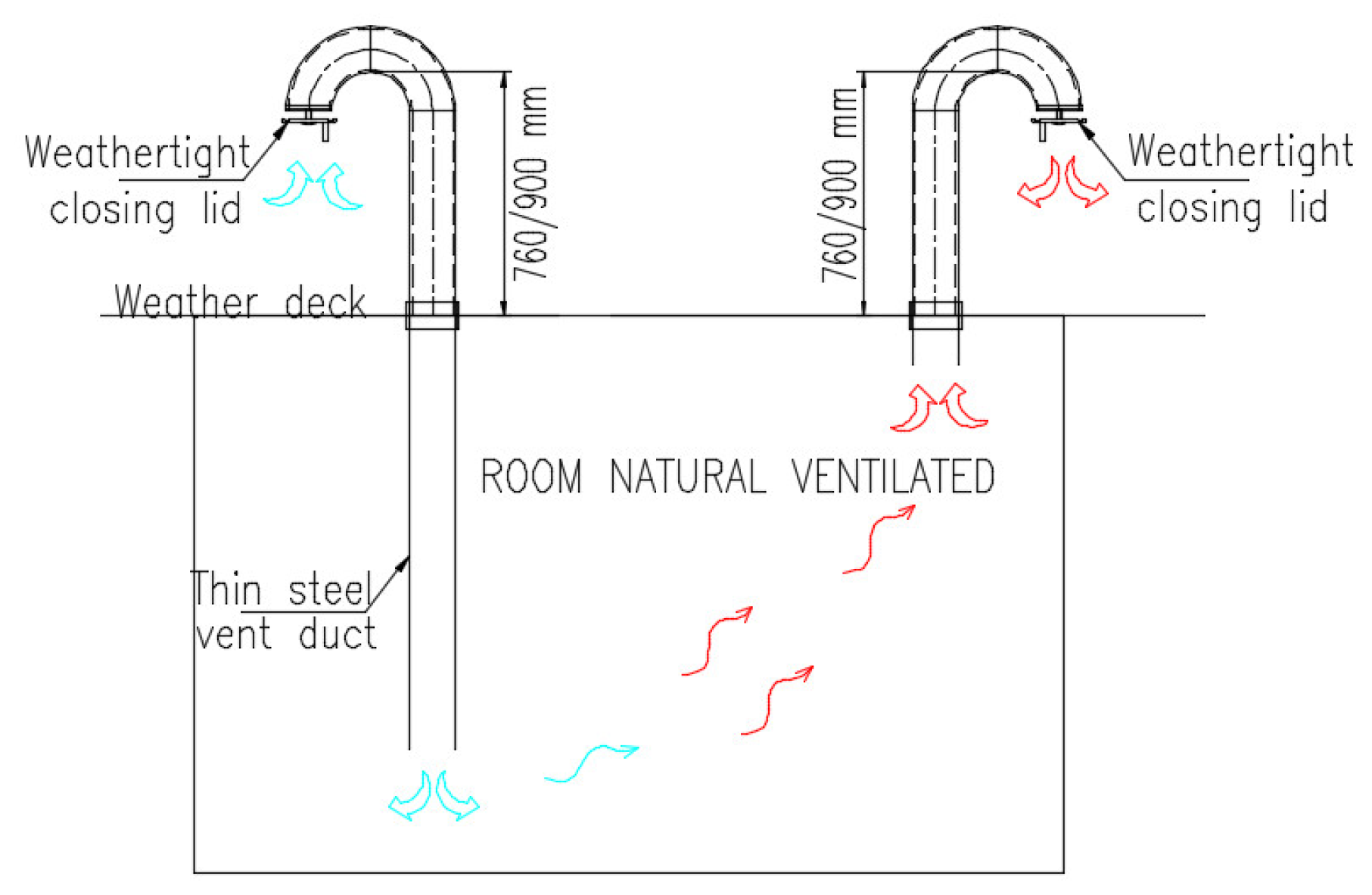
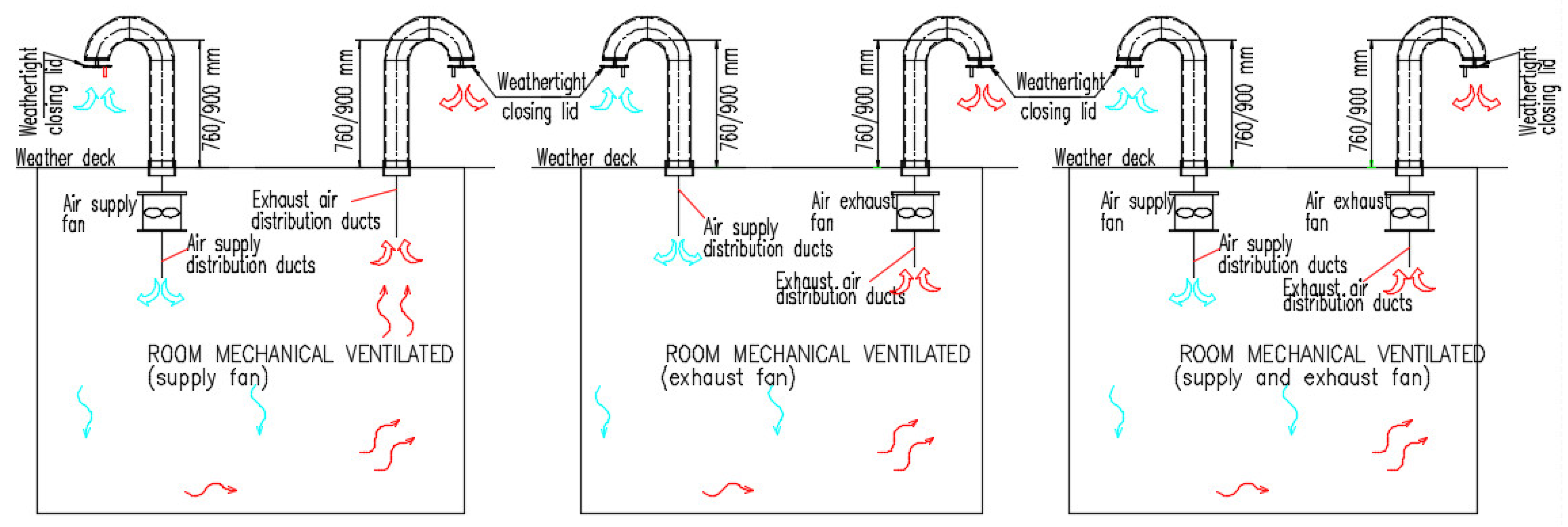


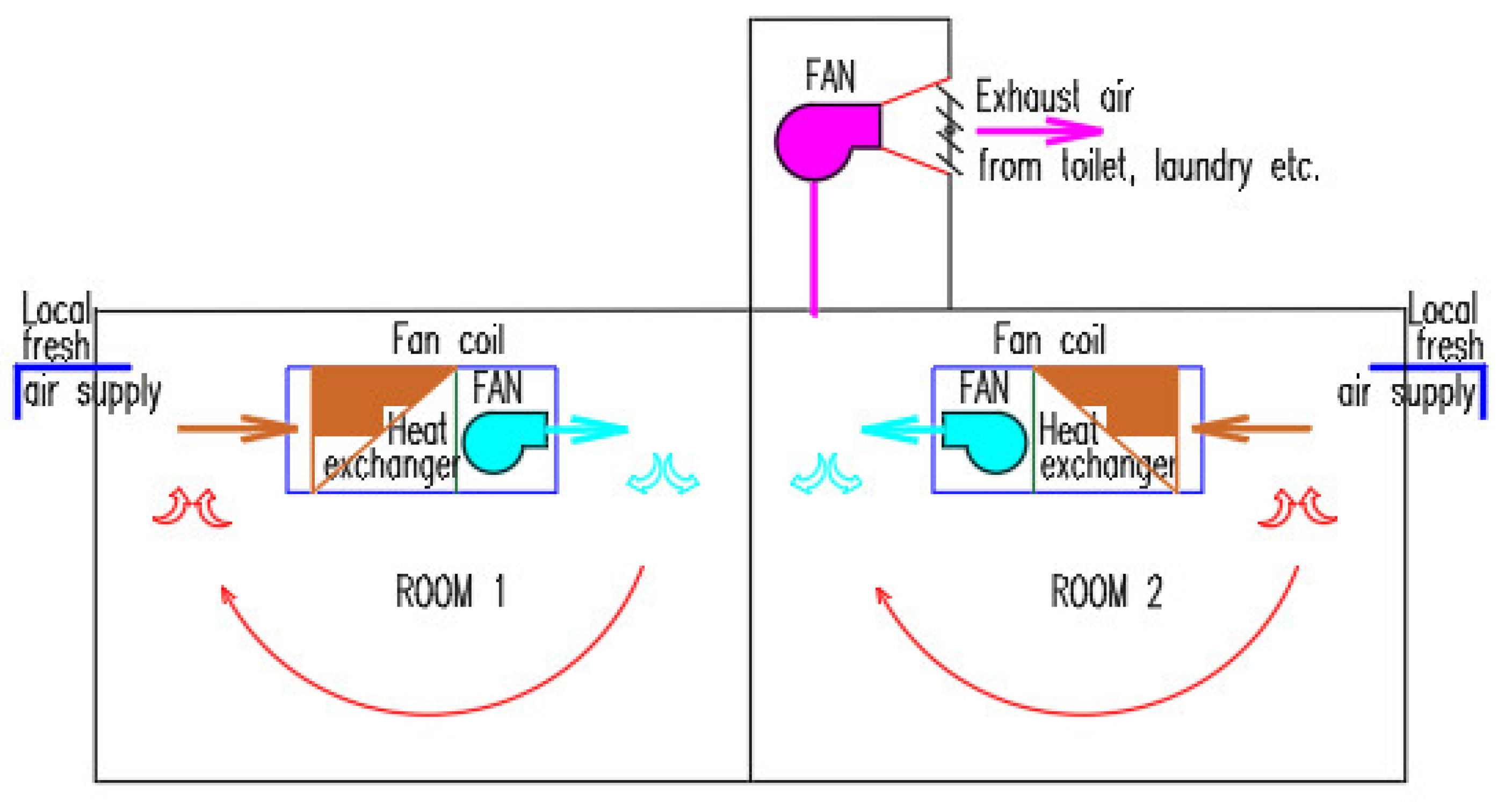
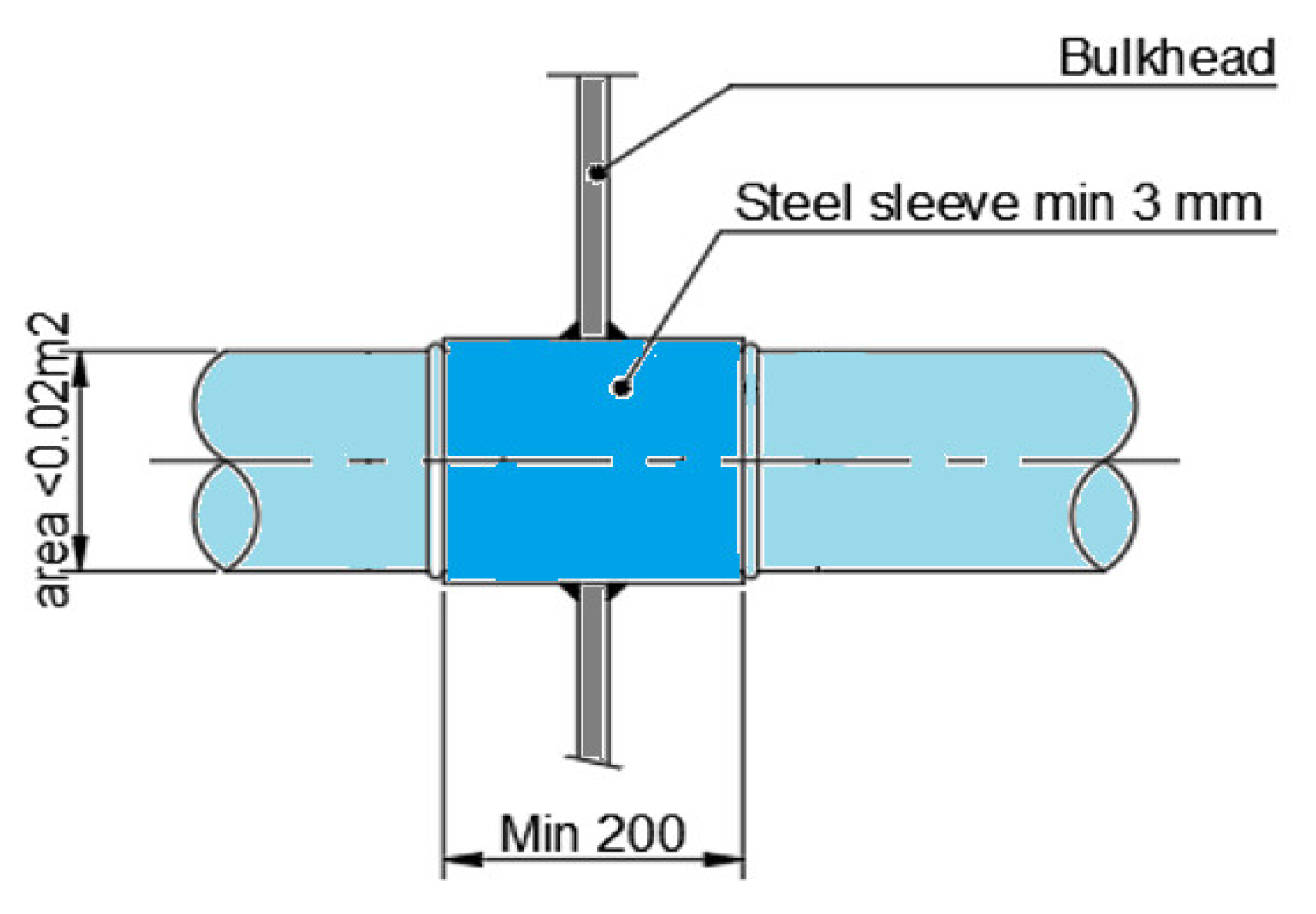



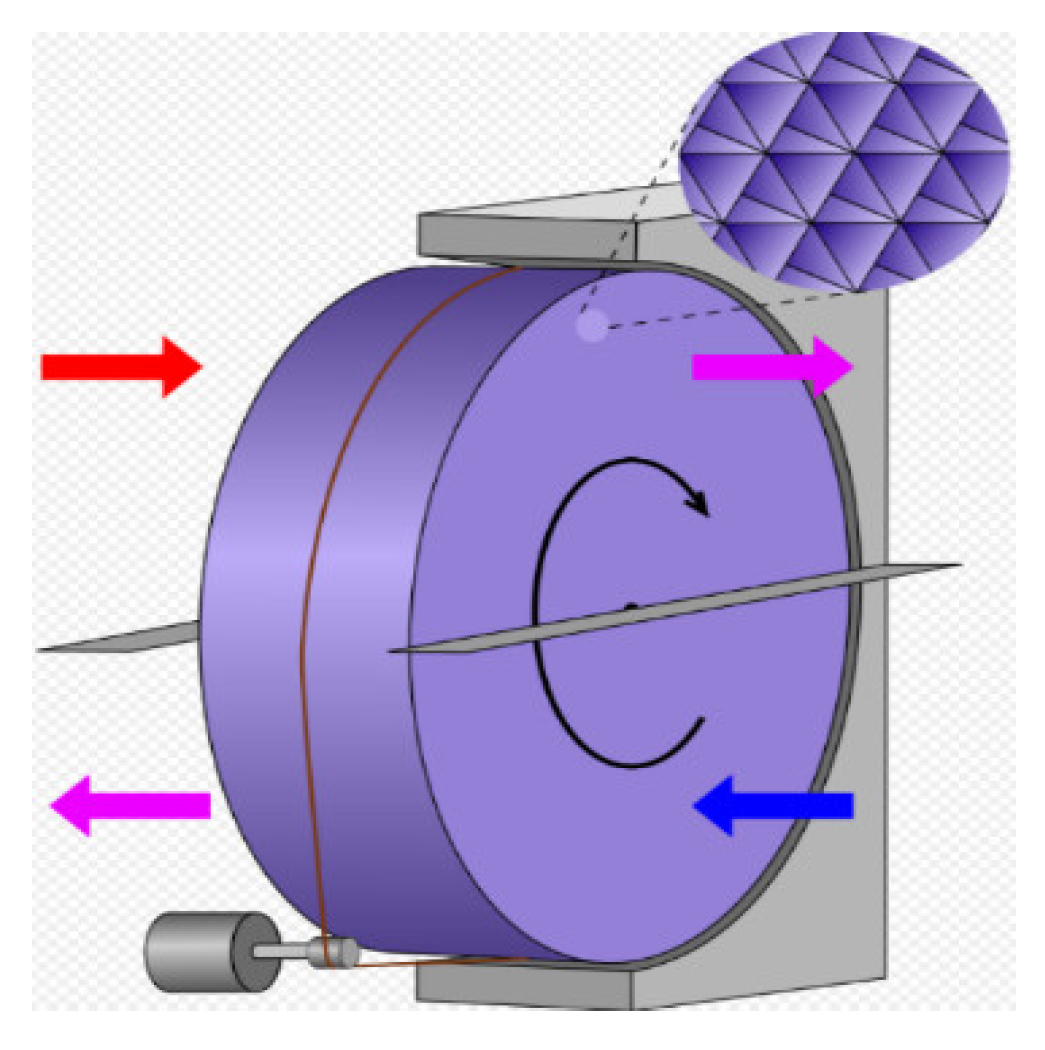





| Microbe | D90 Dose J/m2 | UV k m2/J |
|---|---|---|
| Coronavirus | 6.6 | 0.35120 |
| Berne virus (Coronaviridae) | 7.2 | 0.32100 |
| SARS-CoV-2 (Italy-INMI1) | 12.3 | 0.18670 |
| Murine Coronavirus (MHV) | 15.0 | 0.15351 |
| SARS Coronavirus (Frankfurt 1) | 16.4 | 0.14040 |
| Canine Coronavirus (CCV) | 28.5 | 0.08079 |
| Murine Coronavirus (MHV) | 28.5 | 0.08079 |
| SARS Coronavirus (CoV-P9) | 40.0 | 0.05750 |
| SARS-CoV-2 (SARS-CoV-2/Hu/DP/Kng/19-027) | 41.7 | 0.05524 |
| Murine Coronavirus (MHV) | 103.0 | 0.02240 |
| SARS Coronavirus (Hanoi) | 133.9 | 0.01720 |
| SARS Coronavirus (Urbani) | 2410 | 0.00096 |
| Average | 237 | 0.00972 |
| Average for SARS-CoV-2 | 27 | 0.08528 |
Publisher’s Note: MDPI stays neutral with regard to jurisdictional claims in published maps and institutional affiliations. |
© 2021 by the authors. Licensee MDPI, Basel, Switzerland. This article is an open access article distributed under the terms and conditions of the Creative Commons Attribution (CC BY) license (https://creativecommons.org/licenses/by/4.0/).
Share and Cite
Mihai, V.; Rusu, L. An Overview of the Ship Ventilation Systems and Measures to Avoid the Spread of Diseases. Inventions 2021, 6, 55. https://doi.org/10.3390/inventions6030055
Mihai V, Rusu L. An Overview of the Ship Ventilation Systems and Measures to Avoid the Spread of Diseases. Inventions. 2021; 6(3):55. https://doi.org/10.3390/inventions6030055
Chicago/Turabian StyleMihai, Victor, and Liliana Rusu. 2021. "An Overview of the Ship Ventilation Systems and Measures to Avoid the Spread of Diseases" Inventions 6, no. 3: 55. https://doi.org/10.3390/inventions6030055
APA StyleMihai, V., & Rusu, L. (2021). An Overview of the Ship Ventilation Systems and Measures to Avoid the Spread of Diseases. Inventions, 6(3), 55. https://doi.org/10.3390/inventions6030055








